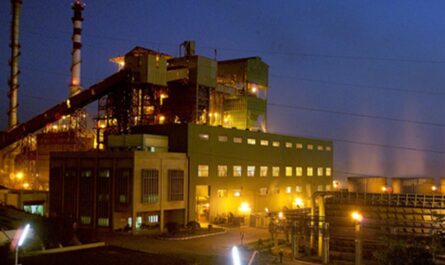The demand for marine fuels such as bunker fuel is integral to the growth of international seaborne trade as ships rely on bunker fuel for their operations at sea. Bunker fuels, commonly referred to as heavy fuel oil or marine fuel oil, provide the energy required for large ocean-going vessels to transport goods across the world. They are typically composed of residual fuels derived from petroleum refining processes. Given the vast amount of global cargo that moves via sea routes each year, the need for bunker fuels to power commercial fleets remains substantial.
The global bunker fuel market is estimated to be valued at US$ 120 Bn in 2023 and is expected to exhibit a CAGR of 6.6% over the forecast period 2024 to 2031, as highlighted in a new report published by Coherent Market Insights.
Market Dynamics:
According to the United Nations Conference on Trade and Development (UNCTAD), merchandise and raw materials shipments across borders via maritime routes have nearly doubled from 8.5 billion tons in 2005 to 11 billion tons in 2019. This rise in ocean freight traffic has led ship operators to procure higher amounts of bunker fuel to meet their energy needs for long-haul voyages. Moreover, bunker fuels remain the most economical choice for ships compared to LNG as marine fuel, which requires expensive retrofits to vessel systems and infrastructure. Despite uncertainties posed by impending IMO regulations, the cost advantage of bunker fuel compared with LNG will continue supporting the former’s consumption in the shipping industry.
SWOT Analysis
Strength: Bunker fuel is widely used for powering large ships and vessels for transportation needs. It is a highly affordable fuel option for shipping companies given its low costs. Shipping companies can benefit from cost savings achieved through bunker fuel. The use of bunker fuel also ensures smooth operations of ships essential for global trade.
Weakness: Bunker fuel is one of the dirtiest fossil fuels and leads to high emissions. Strict environmental regulations globally are pushing shipping companies to reduce emissions. High sulphur content of bunker fuel negatively impacts the environment if not handled properly during combustion.
Opportunity: Global initiatives to reduce greenhouse gas emissions are driving research and development of cleaner alternative fuels for shipping. Adoption of liquefied natural gas as a bunker fuel provides an opportunity for cleaner shipping. Government incentives and investments support transition to cleaner biofuels and sustainable fuels.
Threats: Tighter emission norms may restrict or ban the use of high-sulphur bunker fuel in the long run threatening demand. Volatility in crude oil prices translates to variations in bunker fuel costs adding unpredictability. Trade conflicts and global economic downturns impact shipping volumes lowering bunker fuel consumption.
Key Takeaways
The global bunker fuel market is expected to witness high growth over the forecast period of 2024 to 2031 supported by increasing maritime trade volumes globally.
The Asia Pacific region currently dominates the bunker fuel market accounting for over 50% of global demand led by China, Singapore and Japan. Key ports in these countries are major bunkering hubs in the world servicing large container ships and bulk carriers engaged in international trade.
Key players operating in the bunker fuel market are ExxonMobil, Shell, China Marine Bunker, BP, Bunker Holding and Total. The top players are focusing on developing cleaner burning fuel alternatives as well as expanding supply chains globally through strategic partnerships and mergers. Initiatives to produce bio-blended and synthetic bunker fuels are expected to strengthen their positions in the evolving market landscape.
Note:
1. Source: Coherent Market Insights, Public sources, Desk research
2. We have leveraged AI tools to mine information and compile it




